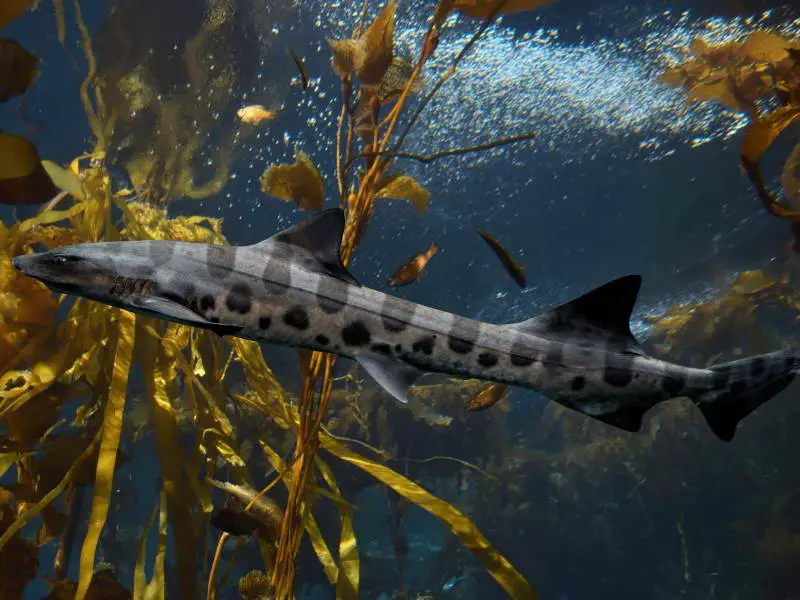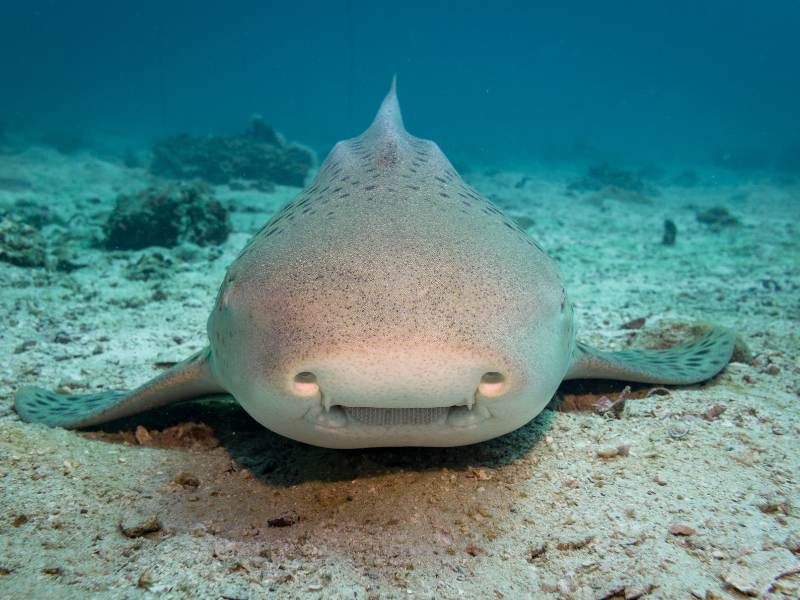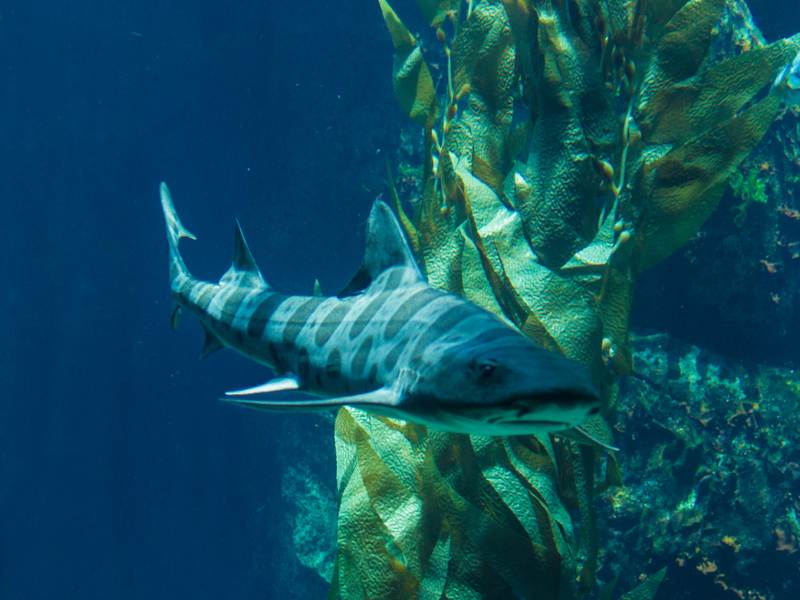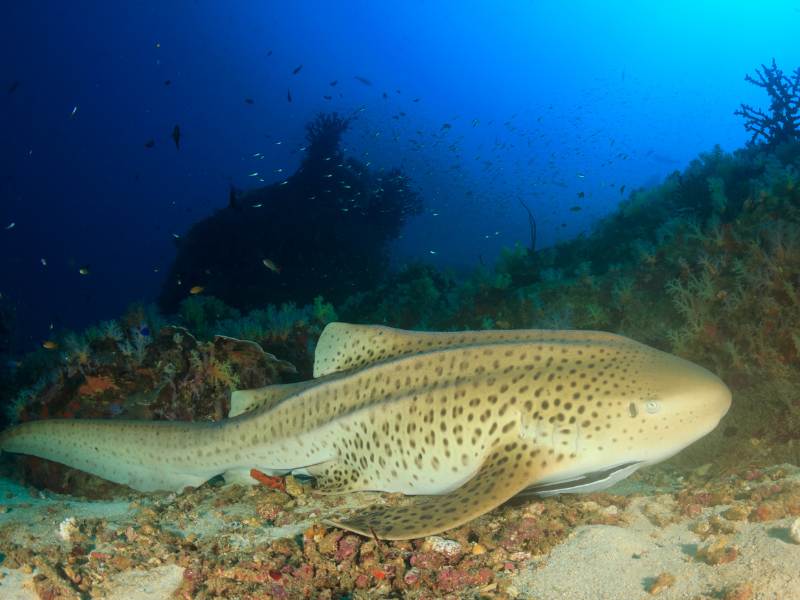Figuring out how big and heavy leopard sharks are can be tricky because there are so many types of sharks. Not having clear details makes it hard to understand how large leopard sharks get, creating confusion about these fascinating creatures.

This guide breaks down the size and weight of leopard sharks in simple terms. By the end, you’ll have a clear picture of how big these sharks are, helping you appreciate their size and importance in the ocean world.
Average Size and Weight of Adult Leopard Sharks

Leopard sharks (Triakis semifasciata) are a medium-sized shark species commonly found along the Pacific coast of North America. On average, adult leopard sharks reach lengths between 50-60 inches (120-150 cm) and weigh between 16-20 kilograms (35-45 pounds) [1]. However, their size can vary slightly.
The largest leopard sharks on record have been measured at up to 84 inches (213 cm) in length, though most do not exceed 72 inches (183 cm) as adults [2]. Males generally grow slightly larger than females, reaching maximum weights of around 22 kilograms (48 pounds) compared to 18 kilograms (40 pounds) for females [3].
Size of Newborn Leopard Shark Pups

Baby leopard sharks, also called pups, are born much smaller than full-grown adults of the species. At birth, leopard shark pups average between 8-9 inches (20-23 cm) in total length [1]. Their small size makes them vulnerable to predation in their early life before growing larger. Pups depend on sheltered nursery areas like eelgrass beds for protection as they mature.
Also Read: Leopard Sharks Teeth: A Comprehensive Guide
Legal Size Limits for Leopard Sharks

Some jurisdictions set minimum size limits to protect juvenile leopard sharks until they reach reproductive age. In California, where leopard sharks are plentiful, the legal minimum length is set at 12 inches (30 cm) [4]. It is illegal to take or possess any leopard sharks smaller than this limit for commercial or recreational purposes. Larger pups and juveniles below the minimum can be carefully released if incidentally caught.
Also Read: Are Leopard Sharks Dangerous or Aggressive?
Habitat and Distribution

Leopard sharks are found inhabiting shallow coastal waters from Monterey Bay, California to Mazatlán, Mexico [5]. They prefer temperate waters between 60-68°F (15.5-20°C) and habitats like sandy flats, rocky reefs, and eelgrass beds [6]. As a result, leopard sharks occupy an important niche as one of the most common small sharks in shallow waters along the Pacific coast of North America.
In summary, adult leopard sharks typically reach average sizes between 50-60 inches and weights of 16-20 kg. However, they can grow larger in some cases. Their small 8-9 inch pups indicate the species dependence on protected nursery habitats in their early life. Size regulations aim to conserve leopard shark populations by protecting juveniles to maturity.
Also Read: La Jolla Leopard Sharks Adventure
References
[1] Leopard Shark – Florida Museum. https://www.floridamuseum.ufl.edu/discover-fish/species-profiles/triakis-semifasciata/
[2] Leopard Shark. Monterey Bay Aquarium. https://www.montereybayaquarium.org/animal-guide/fishes/leopard-shark
[3] Leopard Shark. Hawaiian Islands Humpback Whale National Marine Sanctuary. https://hawaiihumpbackwhale.noaa.gov/species/leopardshark.html
[4] California Department of Fish and Game Code. https://leginfo.legislature.ca.gov/faces/codes_displayText.xhtml?lawCode=FGC&division=4.&title=&part=1.&chapter=11.&article=
[5] Leopard Shark. IUCN Red List. https://www.iucnredlist.org/species/161536/13289209
[6] Leopard Shark. Coastal Conservation. https://coastalconservation.org/california-wildlife/marine/leopard-shark/
